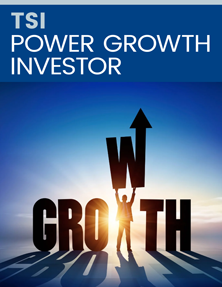Topic: Growth Stocks
Aggressive Investing is risky—but here’s how you cut your risks and maximize profits
When you focus on investment quality, you can multiply your chances of success with aggressive stocks
Aggressive investing is a style of investing that involves attempting to maximize returns through investment in higher risk aggressive stocks and investment products. While higher risk investments can be a worthwhile component of growth, they can also be considerably riskier, so portfolio exposure to such investments should be limited.
 For a rising portfolioLearn everything you need to know in 'How to Find the Best Growth Stocks' for FREE from The Successful Investor. Canadian Growth Stocks: CGI Group, CAE Inc., Fortis Inc. Stock and more. |
4 ways to lower your risk and maximize your profits with aggressive stocks
When you focus on investment quality, you can multiply your chances of success with aggressive stocks.
Most investors understand the chances you take with aggressive stocks. Along with the potential to produce higher returns than more conservative stocks, they bring the risk of bigger losses. And they are often more highly leveraged and volatile than conservative stocks.
But that doesn’t mean you should avoid aggressive stocks altogether. Even for conservative investors, there are very good reasons to turn to aggressive stocks. There are ways to earn big returns without exposing yourself to excessive risk. Below we explain four principles to select growth stocks for the aggressive part of investors’ portfolios.
- Limit aggressive holdings to a smaller part of your overall portfolio. Because aggressive stocks expose you to a greater risk of loss, we recommend limiting your aggressive holdings to a smaller part of your of your overall portfolio. The bulk of your holdings should still be in more conservative shares.
- Focus on investment quality when looking for aggressive stocks with the potential for higher returns. When we look for aggressive investments, we zero in on companies that have established a business and have at least some history of building revenue and cash flow. We also look for companies that stand to benefit as the economy continues to improve, and have proven management and long-term growth plans.
- Diversify your aggressive investments: As with your more conservative holdings, we recommend that you cut your risk by spreading your aggressive holdings across the five main economic sectors (Manufacturing & Industry; Resources; Consumer; Finance; and Utilities). Your emphasis may diverge. In the search for greater gains, you may choose to invest more heavily in Manufacturing and Resources, the two riskiest sectors. If so, take care to spread your money out across the many industries within each of these sectors. That way, you protect yourself from an unforeseeable industry downturn.
- Downplay stocks in the broker/media limelight: That limelight fosters bloated investor expectations. Stocks that are talked up like this may seem like ideal candidates for big gains, with lots of investors getting on board. But when stocks fail to live up to those expectations, brutal downturns follow.
6 tips to reduce the risk of an aggressive investing strategy
Among the considerations that go into a successful growth and aggressive investing strategy, many investors overlook a number of important factors that can considerably lower their risk. Below are seven tips for lowering your growth investing strategy risk:
- Be skeptical of companies that mainly grow through acquisitions. Making acquisitions can speed up a company’s growth, but it also adds risk that can undermine a conservative, safe investing approach. Great acquisitions are rare finds. Many acquisitions come with hidden problems or risks, or they turn out to have been over-priced.
Despite the risks, some acquisitions turn out hugely profitable. So, your growth investing strategy shouldn’t automatically discount companies that have grown through acquisitions. Just keep the risks in mind, and avoid companies that seem unaware of them.
- Keep stock market trends in perspective. It pays to keep in mind that the stock market often anticipates trends—but no trend lasts forever. As well, stocks sometimes put on lengthy downturns due to business and economic problems—but the downturns typically go into reverse long before the problems get resolved.
- Keep an out on a growth stock’s debt. It should be manageable. When bad times hit, debt-heavy companies go broke first. This is one of the best ways you can mitigate risk in your own growth investing strategy.
- The best growth stocks should have the ability to profit from secular trends. These trends outlast ordinary business booms and busts, because they reflect ongoing social change. A growing middle class and rising environmentalism are just two examples of secular trends.
- Look for growth stocks that have ownership of strong brand names and an impeccable reputation. Customers keep coming back to these businesses, and will try their new products.
- Balance your cyclical risk. If you can find a growth stock that has freedom from business cycles, you’re in good shape. Demand periodically dries up in “cyclical” businesses, such as resources and manufacturing. That’s why you need to diversify. Invest in utility, finance and consumer stocks, along with resources and manufacturers.
What are pink sheet stocks?
Pink sheet stocks are for investors looking for high-risk or very aggressive investments—but watch out.
Companies that trade on the U.S. over-the-counter market are said to trade as “pink sheet stocks,” a holdover from the days when the quotes for these stocks were printed on pink paper.
Companies that trade “pink sheets stocks” usually don’t have sufficient market caps, or enough shareholders, to meet most stock exchanges’ minimum criteria.
Over-the-counter shares are often sporadically or inactively traded. That can make buying penny stocks and pink sheet stocks (and selling them) more difficult and expensive than shares on larger stock exchanges.
As well, over-the-counter stocks trade through “market makers,” or traders who maintain an orderly market in a particular stock by standing ready to buy or sell shares. The market maker’s job is to maintain a firm bid and ask price for their assigned securities. If a broker wants to buy a stock, but there are no offers to sell it, the market maker fills the order by selling shares from their own firm’s account. If a broker wants to sell, but no one wants to buy, the market maker buys the shares.
Over-the-counter stocks may at times seem to offer extraordinary opportunities, but this can be an expensive illusion. Most legitimate companies with substantial growth potential will want to leave the over-the-counter market as quickly as possible, and move to the major markets. This tilts the odds against you.
That’s why we’ve always stayed out of the over-the-counter market, and are likely to continue to stay out. There are just too many attractive buying opportunities in major markets where risk is lower and your chances of making money are much better.
Our investment advice: Buying pink sheet stocks can pay off extremely well when it succeeds. But, in addition to the business odds against success, it’s much easier to launch and promote a stock than it is to find a mine, for example, or invent a new battery.
Bonus Tip: Picking aggressive investments from tech stocks
Junior technology stocks are considered aggressive investments. For this reason, when we pick stocks in the more volatile technology field, we make it a priority to focus on firms with high research and development spending. That’s because technology stocks have to treat their research spending as a day-to-day expense, much like salaries or taxes. So research spending comes out of the current year’s sales, and it lowers the current year’s earnings.
As a result, many tech stocks’ earnings per share may look lower than those of stocks in other industries. But, in fact, taking out research spending, they are much more profitable than they appear. That causes some investors to overlook promising tech firms, or to see them as overpriced.
Research and development spending has the potential to pay off in dramatic long-term returns. That’s because the products that grow out of this spending will help tech firms increase their sales and profits over the longer term.
We see high research spending as an especially powerful ingredient for technology stocks that will profit from a global economic recovery. That’s because they’ll be ready with new and improved products that businesses and consumers will want to use when they increase their technology spending.
Follow our three-part Successful Investor strategy
Limit your risk with energy stock investments by investing in each of five main economic sectors. Also, follow our three-part Successful Investor strategy:
- Invest mainly in well-established companies;
- Spread your money out across most if not all of the five main economic sectors (Manufacturing & Industry; Resources & Commodities; the Consumer sector; Finance; Utilities);
- Downplay or avoid stocks in the broker/media limelight.
How much of your portfolio have you allocated to aggressive investments? Has your strategy changed towards aggressive investments? Share your experience with us in comments.



